Safe Summers: Health and Safety Tips for Mothers
By Dr. Geeta Nayyar

Geeta, Nayyar, Medical Contributor
I want to thank Masalamommas for inviting me to participate on this blog spot. I’m very excited to be a contributor and as a physician and mom myself I understand the complex issues south Asians mom face when trying to make the right healthcare decisions for their families.
To off often South Asian families rely on simple herbal remedies or “ginger and garlic” to do the trick when more often than not some sound medical advice and interventions are better and more effective options. However, there is definitely a time and place for some good old fashioned ginger tea!
Let’s start our healthcare series off with some summer safety tips.
The season characterized by sun, swim, and sports has arrived! The last school bell rings and summer officially begins. Your kids are racing towards their bicycles, the park, and the pool. Meanwhile, you are reaching for the sunscreen, insect repellant, and first aid kit.
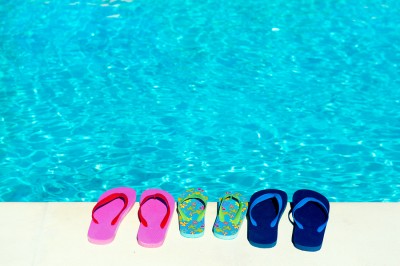
Summer should be an enjoyable time for you and your family, yet it has captured the title of “trauma season” amongst medical professionals. With the right knowledge, preparation, and tools, summer can be an enjoyable and safe time for you and your children. Here are simple things you can do to keep your children safe and healthy, and prevent your children’s summer fun from being shattered by unnecessary visits to the emergency room.
Screen from the Sun
With the sun shining bright and more time being spent outdoors, your kids are at increased risk for the detrimental effects of sun exposure. Research has shown that ultraviolet (UV) A and B rays are responsible for sunburns, pigment darkening, photo-aging, and skin cancers. Because UV exposure now can lead to these harmful consequences in the future, it is imperative to prevent and reduce the potential harms associated with sun radiation.

The following steps can serve as guide to keep your children, and yourself, well protected from the sun.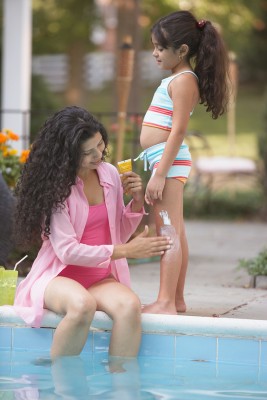
- Avoid sun exposure between 10 am and 4 pm. Infants less than 6 months should avoid sun exposure entirely.
- Use “broad spectrum” sunscreen products. These products contain zinc oxide and/or titanium dioxide and are FDA approved to protect against both UVA and UVB rays.
- Apply sunscreens liberally, repeatedly, and to all sun exposed areas of the skin. Broad spectrum sunscreen with an SPF of at least 30 should be applied 15 to 30 minutes before sun exposure and reapplied at least every two hours, or after each water exposure. “Water resistant” and “very water-resistant” labels mean that the SPF is maintained only for 40 or 80 minutes after water activity, respectively.
- The American Academy of Pediatrics recommends avoiding the use of sunscreens in infants younger than six months. However, a minimal amount of sunscreen of at least SPF 15 can be applied to small and exposed surfaces, when adequate shade and clothing are unavailable.
- Use sun protective gear. Whenever possible, wear long-sleeved, unbleached cotton clothing, UV blocking sunglasses, and a wide-brim hat. Clothing with an Ultraviolet Protection Factor (UPF) of at least 30 on the label offers additional protection.
- Manage sunburns effectively. Once your child gets sunburnt, the skin damage cannot be reversed. Management involves symptomatic relief with cool compresses, aloe-vera based gels, and oral non-steroidal anti-inflammatory drugs (NSAIDS), such as Ibuprofen. Children with severe sunburns, characterized by blistering, severe pain, and systemic symptoms (fever, headache, dehydration), may require hospitalization.
Keep Kids Cool
With excessive heat exposure, your children are more prone to developing dehydration, heat exhaustion, or even heat strokes. Symptoms of heat exhaustion include fatigue, dizziness, sweating, severe thirst, and muscle cramping. Heat strokes occur when body temperature reaches 104 degrees Fahrenheit or higher, resulting in the presence of brain symptoms (confusion, difficulty walking, seizures, passing out). Heat strokes are a medical emergency and require immediate treatment. 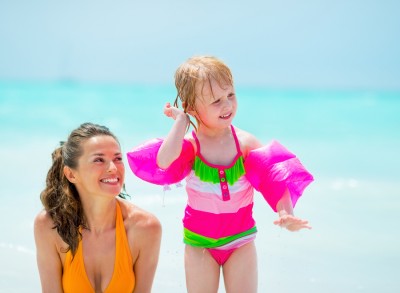
Several mechanisms can be used to prevent and treat heat related illnesses.
- Restrict activity and allow for a complete cool-down period after strenuous exercise.
- Keep your kids well hydrated. Offering flavored water has been shown to increase fluid intake by as much as 90% compared to offering unflavored water.
- Dress your kids appropriately. They should wear loose-fitted and light-colored clothing.
- Never leave your child alone in the car, where temperatures can increase rapidly.
- Respond to symptoms immediately. If your child is experiencing symptoms of dehydration or heat exhaustion: spray with cool water, move into the shade or indoors, sit in front of a fan, rehydrate with water or a sports drink, remove excess clothing, and put an ice-pack or cold compress on their neck or armpit.
- Seek medical attention instantly if your child is not responding to the measures above or is experiencing a heat stroke.
Master Water Safety
Swimming, diving, and boating are fun summer activities that can quickly become dangerous. Drowning is the second leading cause of injury-related deaths in children and the risk of drowning increases significantly in the summer, more than any other kind of unintentional injury.
The increased time spent in the pool and ocean during the summer months can also increase your child’s likelihood of getting swimmers ear or stung by a jellyfish. Water safety can be mastered through the recommendations outlined below.
- Supervise children constantly. If the supervising adult must turn away for even a second,
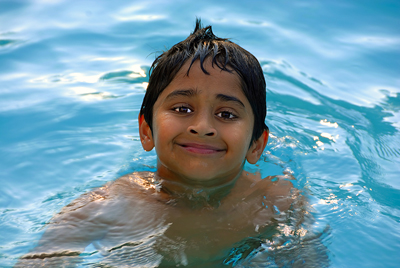 another adult should be always watching your child.
another adult should be always watching your child. - Take precautions if you have a pool at home. Install a four-sided isolation fence, door alarms, pool alarms, and automatic pool covers.
- Use life jackets. Ensure your child is wearing an appropriately sized life jacket when boating, near open bodies of water, or while participating in water sport activities.
- Educate your child about diving safety. Children should only dive into waters of more than 9 feet deep.
- Avert and identify swimmers ear successfully. Swimmer’s ear, also known as otitis externa, is an inflammation of the external auditory canal. The highest incidence of swimmer’s ear is during childhood and summer months and swimming is a well-known risk factor. The most common symptoms include, ear pain (especially with movement of the ear), itching, discharge, and hearing loss. If you suspect your child has swimmer’s ear, you should see a health care provider to examine the ear and confirm the diagnosis.
Swimmer’s ear can be prevented through several mechanisms:
- Shake the ears dry after swimming
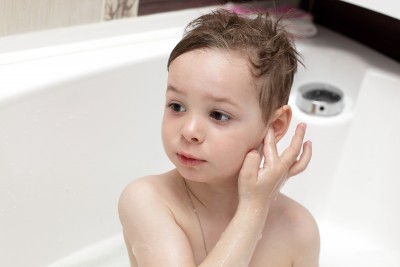
- Blow-dry the ears on a low setting with the dryer 12 inches away
- Use over-the-counter ear drops after swimming
- Wear ear plugs made for swimming
- Manage jellyfish stings effectively. The majority of jellyfish stings present with linear, red, itchy, and painful lesions. If your child is experiencing severe symptoms or having an allergic reaction, seek medical attention immediately. The following steps can be taken if your child gets stung by a jellyfish:
- Remove the tentacles promptly. This can be done by taking a credit card or other plastic object and using it to brush the tentacles off the skin.
- Immerse the affected area in hot water for approximately twenty minutes. Vinegar can also be used to irrigate the affected area.
- Avoid using cool fresh water or rubbing the wound vigorously.
Have a great start to the summer!
**This information provided in this post is a guide only. Please consult your family physician for specific health and medical questions.
More about Geeta:
 Geeta Nayyar, M.D., M.B.A., is a nationally recognized leader in healthcare information technology as well as a board-certified practicing physician. She has been named one of the “Top 26 smartest people in Health IT” by Becker’s Report and ranked one of the “Top 25 Minority Healthcare Executives” by Modern Healthcare.
Geeta Nayyar, M.D., M.B.A., is a nationally recognized leader in healthcare information technology as well as a board-certified practicing physician. She has been named one of the “Top 26 smartest people in Health IT” by Becker’s Report and ranked one of the “Top 25 Minority Healthcare Executives” by Modern Healthcare.
Dr. Nayyar received her Medical Doctor and Bachelor of Science degrees from the University of Miami. She earned her Master of Business Administration from George Washington University. Dr. Nayyar holds memberships and committee appointments in several professional organizations including the American College of Rheumatology and the Association of Medical Directors of Information Systems.
Learn more about Geeta at: geetanayyar.com and follow her on twitter:@GNayyar
Have a question you’d like her to answer here? Send Geeta your questions to columnists@masalamommas.com.


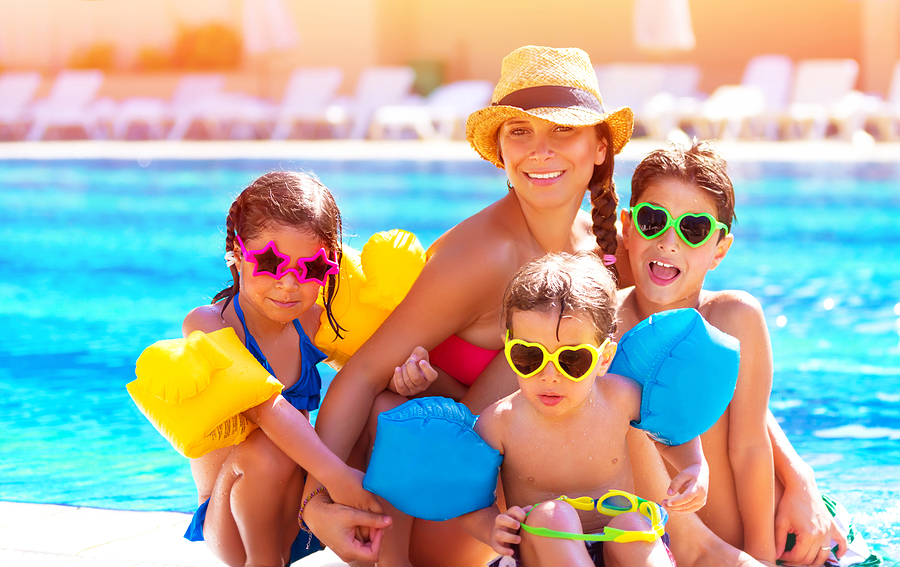
I wouldn’t give my kids ibuprofen. If they do get a little pink, I use AminoActiv cream. Much safer, and works well.